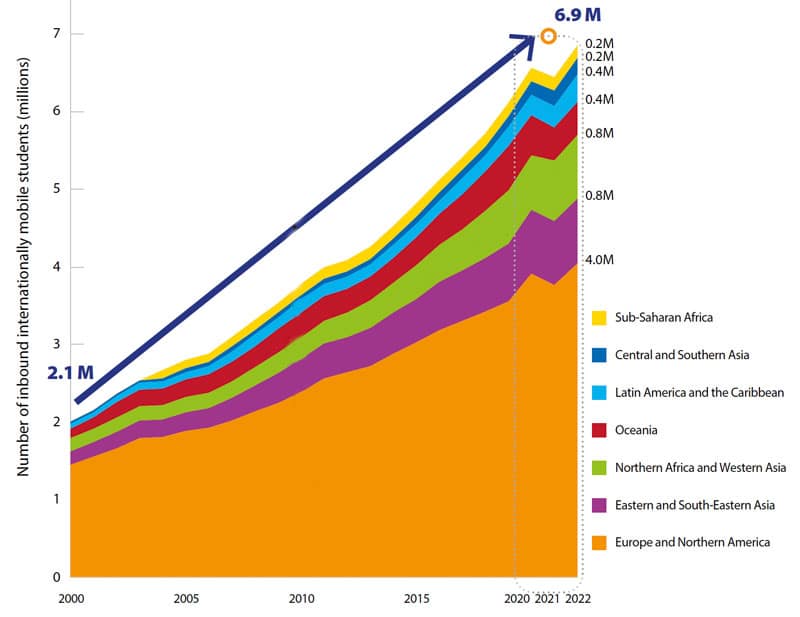The number of students in higher education abroad has more than tripled since the turn of the century
- The number of internationally mobile students grew from 2.1 million in the year 2000 to just under 6.9 million in 2022
- Study destinations within Europe and North America host roughly 40% of that total
The latest figures from UNESCO indicate continued strong growth in higher education enrolments globally. From the year 2000, the global enrolment in higher education expanded by a factor of 2.5 times to reach 264 million students as of 2023.
However, the number of students crossing national borders to pursue higher education grew even faster.
Over the last two decades or so, the number of internationally mobile students in higher education more than tripled, rising from 2.1 million in the year 2000 to nearly 6.9 million in 2022. As we see in the following chart, Europe and North America hosted more than half of the world's mobile students as of 2022 (or roughly 4 million students).

As a percentage of total higher education enrolment worldwide, the proportion of international students rose from 2.1% in 2000 to 2.7% in 2022. Not surprisingly, however, the distribution of mobile students varies from one global region to the next. For example, nearly one in every ten higher education students in Europe and North America is an international student. But that proportion doubles in Oceania where one in every five students has crossed a border to pursue their studies.
There is a similar variability in terms of access to higher education around the world. The global average gross enrolment ratio for higher education has more than doubled this century, from 19% in 2000 to 43% in 2023. UNESCO adds, however, that, "The global enrolment average masks large disparities in access to higher education, with the highest world region [Europe and North America] at 79% and the lowest [Sub-Saharan Africa] at just 9%."
As always, the normal caution applies when considering any such UNESCO statistics. Those relating to global mobility describe students pursuing higher education abroad. One obvious implication of this is that they do not reflect the very important numbers of students moving across borders for language studies, K-12, or college programmes. Even so, this is an important benchmark in our sector, and an oft-cited statistic that serves as a proxy for those overall volumes of global student mobility across all educational categories.
There are entirely credible models that project that that number of students abroad for higher education will reach 9 million by 2030, and these updated totals from UNESCO would suggest that we are well on our way to that end-of-decade target.
For additional background, please see:
















